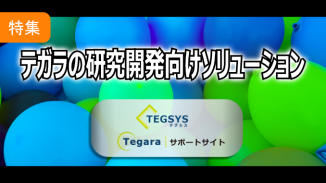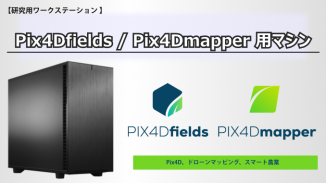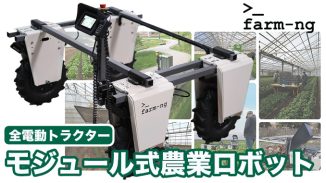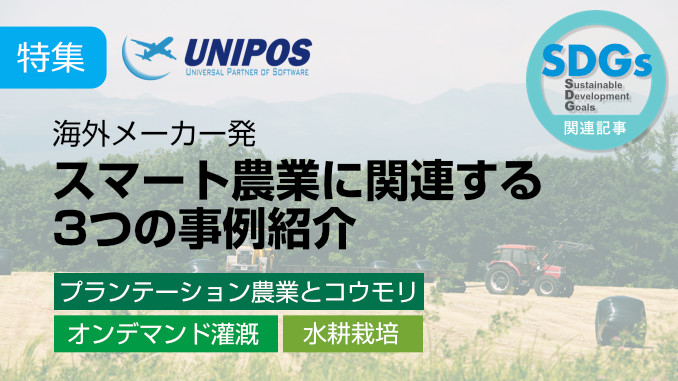
The population of Japanese farmers is steadily declining, and according to the "Agriculture and Forestry Management Body Survey Results" published by the Ministry of Agriculture, Forestry and Fisheries in November 2nd year of Reiwa, individual management of farm management bodies It is said that the number of obi has decreased by 11 (down 27%) in the five years from 2 to the second year of Reiwa.
On the other hand, the number of group management bodies has increased by 5 (1% increase) in five years, and about half of them, 2.6%, answered that they are "farming using data". doing.
Ministry of Agriculture, Forestry and Fisheries: Summary of 2020 Agriculture and Forestry Census Results Public Material
https://www.maff.go.jp/j/tokei/kouhyou/noucen/index.html#y
In the background, attention has been focused on efficient, highly productive, and environmentally friendly farming forms by incorporating technologies such as "smart agriculture" that utilizes data and machines that operate based on the data. It is possible that there is.
Therefore, this time, we will introduce examples of utilization and solutions in which the products of three overseas manufacturers handled by Unipos are used in the agricultural field.
table of contents

The United States, which sells the SongMeter series of recorder devices that record sounds and ultrasonic waves emitted by wild animals. Wildlife Acoustics Introducing use cases provided by the company.
Insectivorous bats are attracting attention as beasts that can prevent insect damage to crops without using pesticides.This case is the bat detector of the company's product. Song Meter SM4BAT FS and Kaleidoscope Pro This is an example of confirming the ecology of bats in a tea plantation in Sri Lanka.

Wildlife Acoustics :
Identification of bats in Sri Lankan tea plantations
This content is translated by referring to the following article:
https://www.wildlifeacoustics.com/customer-stories/bats-and-tea-using-acoustics-to-identify-bats-on-a-plantation-in-sri-lanka
Let's see how a research team at the University of Ruhana in Sri Lanka is using Wildlife's audio recording equipment to address the following challenges:
- Understand bat ecosystem services to help control pests in tea plantations
- Find and confirm the presence of eight different types of bats in the landscape
- Understand how agricultural consolidation affects bat populations
Why "bats" and "tea"
Sri Lanka is the fourth largest producer of tea in the world, and bats are the major predators of insects in tea plantations.Bats are also considered a good indicator of biodiversity and environmental change.There are very few studies on bats in tea plantations, and bat diversity needs to be evaluated in order to benefit tea plantations by controlling pests.
Why Acoustics
Tharaka Kusuminda's team at the University of Ruhuna initially adopted a "capture" approach to assess the racial composition and their abundance of bats in tea plantations.But capture methods such as nets and traps were inappropriate for their habitat, the open nature.That's where the unmanned Wildlife recorder came in.
Design and method
14 sampling sites were selected as the installation locations for the recorder. Two SMM-U2 with ultrasonic microphone SM4BAT recorderと Echo Meter Touch 2 Pro Has been tested with a fragmented forest patch from the University of Ruhuna, and various recording schedules and settings have been tested.
And in mid-February 2019, fieldwork at seven locations began. Two Song Meter SM2BAT FS detectors with SMM-U7 ultrasonic microphones are mounted on a tree in the shade inside the tea plantation, one at the edge of the tea plantation and the other in the center. It was installed in the location where it is located.To cover all the nocturnal activities of bats, bat sounds were recorded at each location for three consecutive nights from sunset to sunrise.
Early findings
Kaleidoscope Pro The first university analysis using the software suggested the presence of eight species of bats across different tea-growing areas.A large number of recorded foraging sounds also confirmed that bats are using tea for hunter-gatherer.
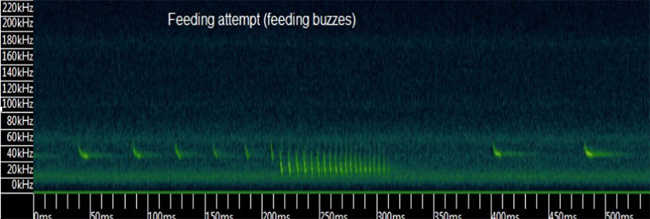
The project is still in its infancy, but Tharaka Kusuminda and his team members want to know more about the hidden life of bats at tea plantations in Sri Lanka.
Next step
The final result of this project will be shared with the Sri Lankan Forest Department, Wildlife Conservation Department, and the tea industry, how insectivorous bat activity and species richness will contribute to the landscape of ecologically friendly tea plantations. Quantify whether it has a positive effect on.This data will help maximize bat ecosystem services and promote policymaking and land use planning to create their friendly tea plantations.

Australia, which mainly deals with scientific instruments related to environmental research and monitoring edaphic science Introducing information on on-demand irrigation schedules provided by the company.
Research and results on "on-demand irrigation" that adapts irrigation schedules to the demands and requirements measured from soil and plants to maximize plant growth while conserving water supply. And the equipment suitable for the on-demand irrigation is introduced.
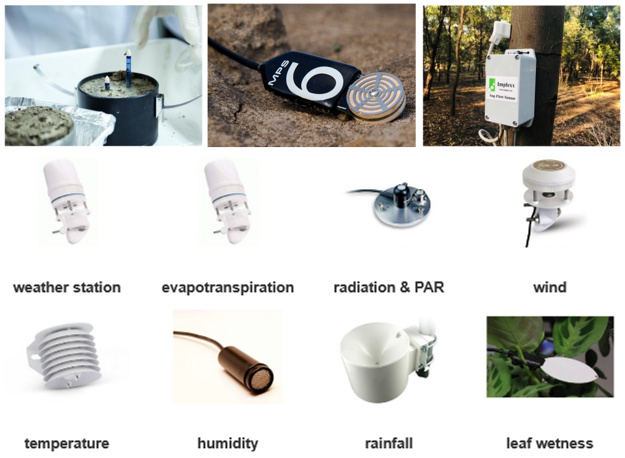
edaphic scientific:
On-demand irrigation schedule reduces water input
This content is translated by referring to the following article.For the figure showing the source in the text, refer to the figure on the same page:
https://edaphic.com.au/reducing-water-inputs-with-on-demand-irrigation-scheduling/
The latest research shows that soil or plant-based decisions can reduce irrigation by up to 40%.
Water resources are becoming more and more expensive and scarce.To reduce costs and save water, it is possible to change the irrigation schedule (that is, timing and dosage).However, when changing or reducing irrigation, it is important not to reduce yield or growth.A balance between maintaining yields, much less increasing irrigation and reducing irrigation is an ideal result for irrigation management.Recent studies claim that such ideal results are obtained with soil and / or plant-based irrigation schedules.
What is on-demand irrigation?
Irrigation Science, Water A recent study by scientists at the University of Tennessee in the United States found that scheduling irrigation based on soil or plant requirements had no noticeable effect on plant growth and photosynthesis. It has been shown that the input can be reduced.
Scheduling irrigation based on soil or vegetation is also known as "on-demand" irrigation.That is, irrigation is applied according to demands and requirements measured directly from the soil and / or plants.On-demand irrigation techniques are in contrast to "traditional" or "traditional" irrigation techniques, where a certain amount of water is applied on a regular basis.
Researcher survey and results
For soil-based irrigation scheduling, researchers are from the METER Group HYPROP2 Was used to create a water retention curve, also known as the soil moisture characteristic curve, to determine the relationship between soil moisture potential and volumetric moisture content.Irrigation began when the soil moisture potential was below -10 kPa.This corresponded to the soil volume moisture content of about 40% of the researcher's experimental substrate.
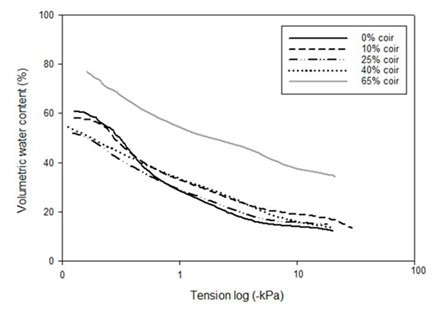
For irrigation schedules based on plant physiology, researchers used the relationship between photosynthesis and soil volumetric water content to establish a critical threshold when irrigation should be initiated.As the soil dries (that is, the volumetric water content of the soil decreases), photosynthesis decreases.Researchers said irrigation should be started when photosynthesis is reduced by 10%.When photosynthesis was reduced by 10%, the soil volume moisture content of the researchers' experimental substrates was about 35%.
The plant physiology-based irrigation scheduling approach adopted by the researchers is similar to the "irrigation curve" method previously emphasized by Edaphic Scientific (Edaphic Scientific).Reference: Manufacturer page).The difference between these methods is that the irrigation curve is based on sap flow or stomatal conductance rather than photosynthesis.However, the methods, methods, and applications are similar.
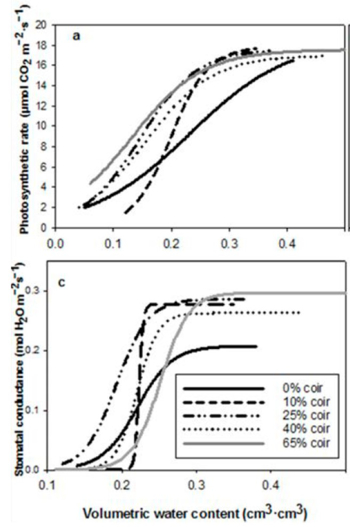
The results of an experiment by Jahromi et al. Found that water applied to soil-based irrigation schedules was reduced by up to 30% compared to traditional methods.Similarly, compared to traditional methods, water usage in plant-based irrigation schedules has been reduced by up to 40%.Reducing irrigation did not recognize any adverse effects on photosynthesis or growth.
This study emphasizes how irrigation can be potentially reduced by adopting soil or plant-based sensing technology without adversely affecting plant growth or yield.MPS-6 soil water potential sensorSoil detection technologies such as are calibrated, easy to install and require little ongoing maintenance.Also Imprexx Sap Flow SensorPlant-based sensors such as are also calibrated andEvapotranspiration from an ATMOS 41 weather station It can also be used in combination with to provide powerful data for on-demand irrigation schedules.

The United States, which develops various devices for measuring various values, focusing on water quality-related items such as pH / ORP / DO / Conductivity / Temperature. Atlas Scientific Introducing the 6 types of hydroponic cultivation systems provided by the company and blogs showing the characteristics of each.
The types of plants to be hydroponically cultivated, the required space, the difficulty level, the advantages and disadvantages, etc. are introduced in detail for each hydroponics system.In addition, recommended measuring instruments are listed for the success of these hydroponics.
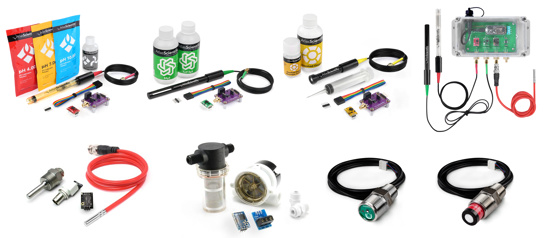
Atlas Scientific :
6 Basic Hydroponics Systems-Which Should You Use?
This content is translated by referring to the following article:
https://atlas-scientific.com/blog/hydroponic-systems/
Hydroponics raises the big question, "Do you really need soil?"The Hanging Gardens of Babylon, one of the Seven Wonders of the Ancients, has made a name for itself as it uses hydroponics with advanced irrigation techniques.By the way, many plant lovers look to plants primarily for "growth," "low effort," and / or "great aesthetics."Soil can increase this "labor" and it is common to overlook the importance of soil.In order to produce great results for plant growth, it is necessary to control the pH of the soil (How to Mesure the pH of soil: Manufacturer page).So why not exclude the soil from the important factors?
Soil serves two main purposes in the natural environment.One is to protect the plant from erosion and other dangers, and the other is to retain nutrients for plant growth.If you grow your plants indoors or in a controlled environment, hydroponics systems are a great choice for promoting plant growth and efficient use of water and energy.
What is hydroponics?
Hydroponics is "soilless" horticulture.Hydroponics systems can remove soil from key factors and allow plants to grow by hanging them in or around nutrient solutions.Soil is not needed and hydroponic systems help plants grow efficiently, as the need and danger of nutrient retention is removed from the life of the plant.Imagine a floating aquatic plant, such as a floating grass.A similar setup can be achieved for plants that do not grow naturally in aquatic environments.Considering that sunlight, space, and other growth conditions have already been checked, plant roots are free to absorb nutrients from the aqueous solution and grow.
There are many domestic and industrial derivations of hydroponics to grow plants.Hydroponics is highly customizable, and if temperature (temperature) And oxygen, especially if appropriate monitoring equipment is available.Hydroponics can thus be adapted to different plant varieties for optimal growth conditions and results.Perhaps you've already seen hydroponics setups in greenhouses before, but all existing hydroponics systems fall into the following six major hydroponics categories:
- Aeroponics
- Wick
- Water Culture
- Ebb and Flow
- Drip
- NFT (Nutrient Fluid Technique)
This article will help you understand and choose the right hydroponics setup for your situation."Green Our Planet", which runs a school hydroponics STEM program in the United StatesWEB site) ”, The hydroponic system grows plants up to twice as fast in the same space, produces 2 to 3 times more growth, and up to 10% more water than traditional soil horticulture. It is said that you can save money.These are oxygen, humidity, temperature and pH monitoring in hydroponics (pH monitoring), Brought by enhanced control to set up lighting etc.If you're still unsure about this futuristic horticultural technique, take a look at six different hydroponics systems you can build.
Basic hydroponics system
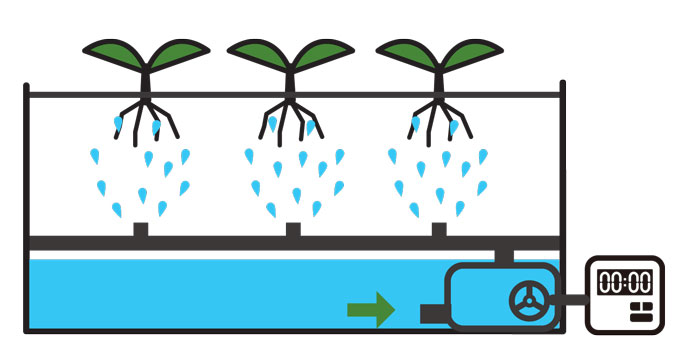
1. Aeroponics Systems
Simply put, the aeroponics system uses a device to suspend the plant in the air and inject mist into the roots of the plant.The excess water drips from the roots into the reservoir below and is reused through the spray nozzle, making the water very efficient.As long as the size of the reservoir is large enough to accommodate the size of the plant you want to grow, all types of plants can grow on the aeroponics system, which is a great advantage of this approach.
The disadvantage of this system is that it can be more difficult to set up than other hydroponics systems, and it is probably the most advanced of all.Since the roots are suspended in the air, the spray intervals need to be relatively short and require a short cycle timer to prevent the plants from drying out, which increases energy consumption.Also, due to the large number of sprayers, these nozzles can become clogged over time and difficult to clean due to nutrients and impurities in the water.Similarly, moisture is a concern in this setup to prevent the plants from drying out if the system fails. * This problem is a humidity sensor (humidity sensor) Can be easily monitored and prevented
Overall, Aeroponics is a very efficient approach to hydroponics if you have the time and resources to set up and maintain your system.
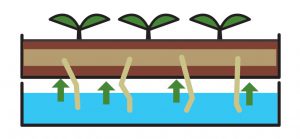
2. Wick Hydroponics
Compared to state-of-the-art hydroponic systems, wick setup is probably the easiest approach of any other hydroponic system.No electricity, no flashy pumps, no spray system required.The basic idea is similar to the old oil wick candle.The wick (usually nylon) is submerged in a reservoir of nutrient solution and the nutrient solution is fed to the plant growth tray.This growth tray contains water-absorbing substances such as vermiculite and coconut fiber, which transfer nutrients from the core to the plant.
This approach has a simple setup and is very useful for small gardening such as home herbs.It requires little post-setup effort, but is not suitable for large plants or plants that require large amounts of water, such as tomatoes.This simple wick approach also reduces the uniformity of nutrient distribution to the plant.Proper checks are recommended every few weeks to maintain proper nutritional levels. * This is a conductive probe (conduction probe) Can be easily achieved by checking the EC level (electrical conductivity) of water.
Disease prevention maintenance also reduces the accumulation of nutrients from excess particles in the reservoir solution, which can interfere with the movement of nutrients in the core.
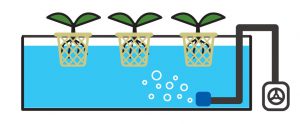
3. Water Culture Hydroponic Systems
In the simpler realm, Water Culture Hydroponic also offers a very simple approach to hydroponics.All you need is a reservoir, a net pot, and nutrients.This setup is highly customizable for plants of various sizes without changing many other inputs.Simply set up the correct size net pot, reservoir, and submerge the plant in a nutrient solution.Small-scale water culture setups are possible even in Mason jars, while deep water culture for large-scale plants is also possible.
The Water culture hydroponic system has the great advantage over the Wick setup in that the roots are in constant contact with the water, allowing the plant to constantly absorb nutrients.However, if not properly managed, the roots can become sick, rot and die.This method provides proper nutritional levels, pH control, and dissolved oxygen control for the water culture setup (dissolved oxygen monitoring) Is very important to prevent improper growth conditions for the plant.It is highly recommended to oxygenate the water with an air stone or pump.
Overall, the Water culture hydroponic system is a very simple and intuitive way to increase plant growth rapidly.
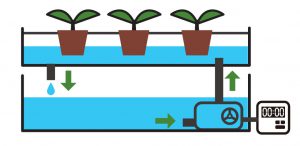
4. Ebb and Flow Hydroponic Systems
The Ebb and Flow Hydroponic system is a system in which the nutrient solution overflowing from the plant growth bed is discharged to the reservoir as shown in the figure and circulated again via the submersible pump.This system utilizes marine tides such as “ebb and flow” to soak the roots of plants in a growing bed made of water-absorbent medium, but with water. Minimize the possibility of oversaturation.The pump has a stop-start cycle time to submerge the growing bed, providing time for water to drain into the reservoir, which is usually located below the growing bed.
This approach requires more space than other approaches and is less likely to be used for large plants due to the space requirements required.The introduction of submersible pumps also requires engineering, but allows for more advanced customization based on the needs of the target plant.To further improve the technology, flow meter (flow meter) Can be used to fine-tune the tide cycle to suit optimal growth conditions.Please be careful not to overflow the growing bed.When done correctly, automation and self-driving setups produce great growth results.
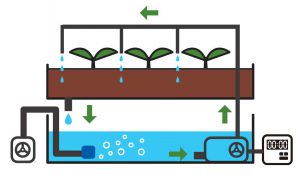
5. Hydroponic Drip Systems
When it comes to customizability, this Drip system is best suited if you frequently change your plant or gardening approach.In this method, water is dropped on the roots of plants planted in a water-absorbent growth medium.The excess water discharged into the reservoir is pumped up to resume the cycle.This approach is similar to the spray cycle of the Aeroponics system, with similar oxygen gas monitoring (oxygen gas monitoring) Can be used, but it is not very advanced as it will use different tube types for dripping instead of spray nozzles.
You can also perform a simple setup of manually refilling the dripper tank from the drainage reservoir, but with two pumps (one to mix and oxygenate the solution, and one to move the solution from the reservoir to the dripping nozzle. You can also set up).Unless you are experimenting with this hydroponic system on a small scale, we recommend using the pump approach for automated driving processes.
Overall, the Drip system is very flexible with respect to the available space for the plant you want to grow, and the type, quantity, and size of that plant, but this system is cumbersome to maintain and maintain multiple pumps and reservoirs. there is a possibility.
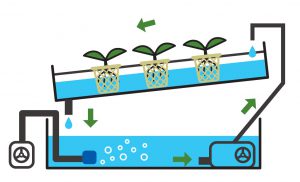
6. Nutrient film technique for hydroponics
Nutrient film technique is a method of combining "drip" and "ebb and flow" hydroponic cultivation systems with more advanced settings.The basic idea is the same (a growth bed and a reservoir for nutrient discharge under it).Normally, the growth bed is tilted in one direction to drain the solution, creating a thin layer of nutrient solution that the plant will absorb as it passes (hence the title "film"). ).
This thin layer makes this technique work best for small rooted plants, but this NFT (Nutrient film technique) setup can be scaled up or down relatively easily depending on the situation.We also recommend using net pots rather than absorbent growth media to ensure that sufficient nutrients reach the roots of the plant.
This NFT hydroponics system is complicated by pumping for oxygen treatment and pumping the reservoir solution to the growing bed in a continuous cycle.In addition, if something goes wrong, the thin water that soaks the roots can stop flowing and the plant can quickly dry out.That said, this approach allows for high monitoring of all growth inputs and produces growth results for some of the best hydroponics systems, making them widely accepted in the hydroponics world. I will.
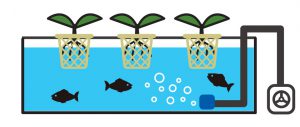
Aquaponics vs Hydroponics
The Aquaponic system uses the same approach as the Water culture system, but instead of adding nutrients to the water, it adds live fish.This method is commonly used to combine fish and plant growth into a single closure system.Behind the use of fish is the idea that they produce waste that turns into nutrients for plants (eg nitrates and ammonia).Ideally, the fish will live happily, the plants will clean the water, and all parties will prosper.However, the balance is difficult because dirty water can kill fish and the waste produced by fish can be inadequate for growing plants.
Aquaponics is a form of hydroponics, but not all hydroponics are aquaponics, so this approach is not necessary primarily if you are impressed with the growth of the plant. , Deserves an honorable mention in the discussion of hydroponics systems.
"Which is the best hydroponics for me?"
The first thing to consider when choosing a hydroponics system is how much time and effort can be spent on the hydroponics system.Less setup and maintenance Hydroponics systems work better with Wick and Water culture systems, but the Drip, Ebb and flow, and NFT approaches require more engineering for setup and maintenance. Will be done.Maintenance requirements for each hydroponics system are slightly different, but all are summarized with similar parameters, Atlas' Wi-Fi Hydroponics Kit (wi-fi hydroponics kit) Can be easily monitored.The device provides real-time pH, conductivity, and temperature measurements to ensure that your hydroponic system is in optimal condition.
The same is true for the size and scale of plant production.One thing to think about is the available space.For example, in a “Water culture system”, large-scale growth operations are more costly, so this system is not recommended.The type and species of plant you want to grow is also a major factor in choosing a hydroponics system. "Drip" and "Ebb and flow" offer customizability and flexibility for a wider variety of plants, but require a lot of setup.
In summary, the advantages and disadvantages of the six hydroponics systems are listed below.
Aeroponics :
- Pros: High water efficiency, no need to consider growth medium, plants are highly oxygenated XNUMX/XNUMX
- Disadvantages: Costly and difficult to set up and maintain, with little room for error
Wick :
- Pros: Simple.Inexpensive.No need for pumps or electricity
- Disadvantages: Large plants do not get enough nutrients and the nutrient distribution is inconsistent
Water Culture :
- Pros: Simple.Inexpensive.Easy to customize for a wide variety of plants
- Disadvantages: Can be annoying on a large scale, plants are prone to rot if dissolved oxygen is not properly monitored
Ebb and Flow :
- Pros: Highly customizable and low energy requirements for automated setups
- Cons: Difficult to set up and requires space
Drip :
- Pros: Flexible to any space and various plants
- Cons: Difficult to set up and maintain for automated process
NFT (Nutrient Fluid Technique) :
- Pros: Highly controllable inputs, easy scaling
- Disadvantages: technical setup, close monitoring required
Atlas Scientific offers a wide range of instruments, but if you're not sure which monitoring device suits your hydroponics needs, feel free to contact Atlas Scientific.
Summary
Produce safe deliverables (harvests) with limited resources, as listed in “Goal 17. Zero Hunger”, one of the 2 goals of the SDGs.Sustainable agricultureIt has become a global challenge to establish a solution to the food problem.

Goal 2. Zero hunger:
End hunger, achieve food security and nutritional improvements, and promote sustainable agriculture
Ministry of Agriculture, Forestry and Fisheries: SDGs Goals and Targets
https://www.maff.go.jp/j/shokusan/sdgs/sdgs_target.html#goal_02
As mentioned at the beginning, the number of Japanese farmers is decreasing, but research and development related to agriculture is progressing all over the world to make up for it.As a result, different approaches are being applied to agriculture, making it possible to achieve even greater results without compromising productivity or safety.
In this article, we have introduced the products handled by Unipos as an example, but if you have a request such as "I am interested in a product called △ from a manufacturer called 〇",Overseas product procurement service for R & D Unipos Please feel free to contact us.Even if the product has not been handled so far, we will contact the manufacturer and confirm whether it can be handled.

